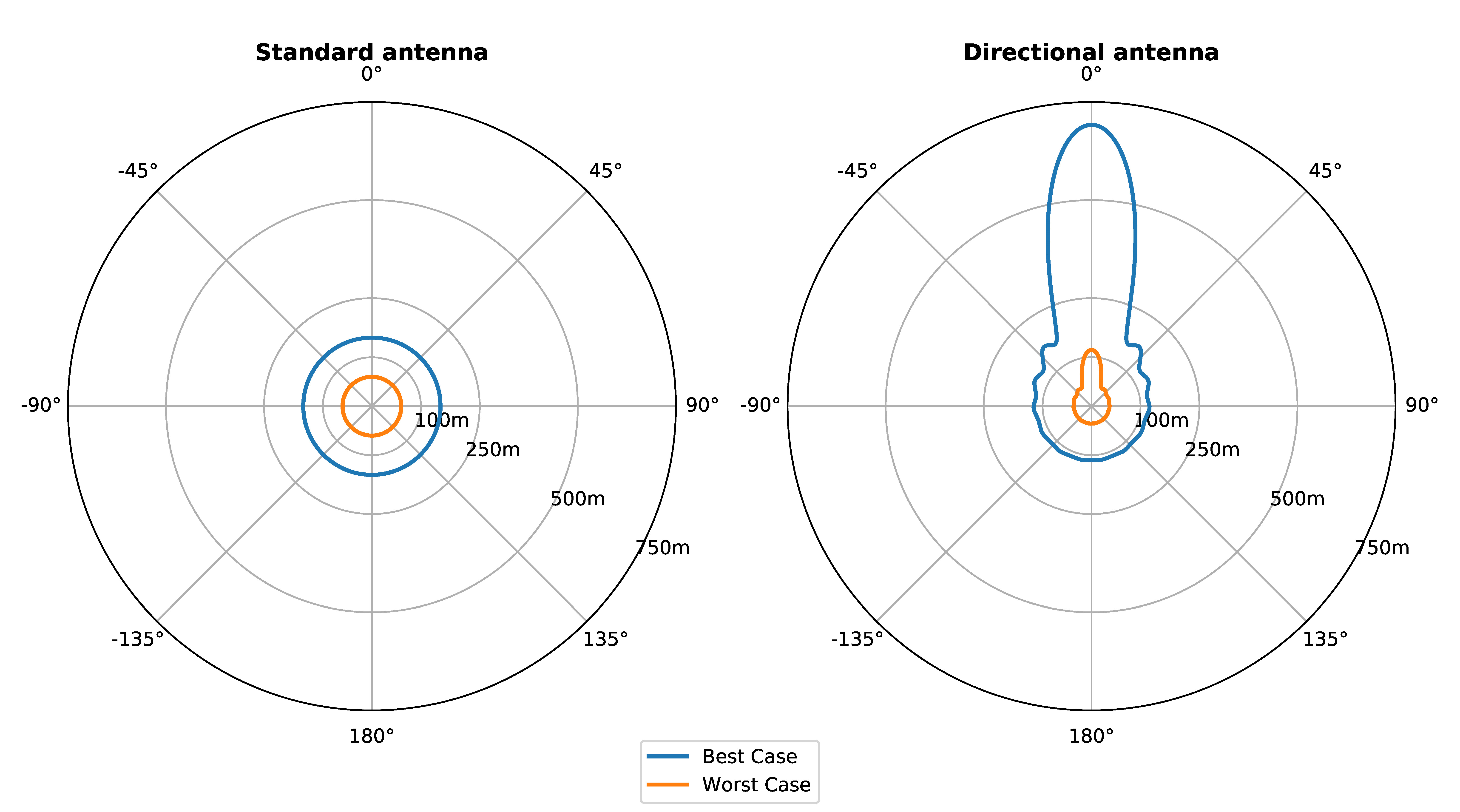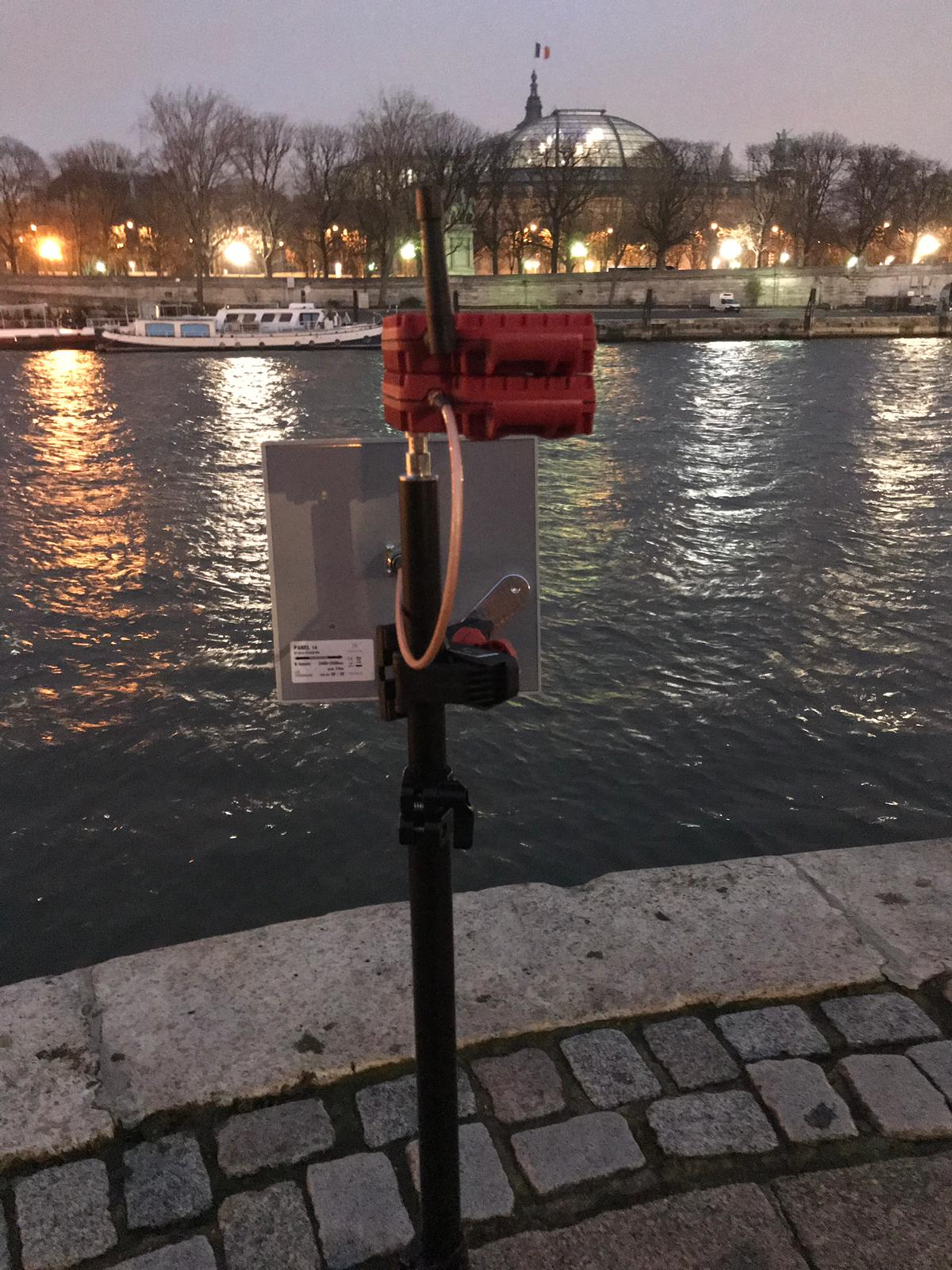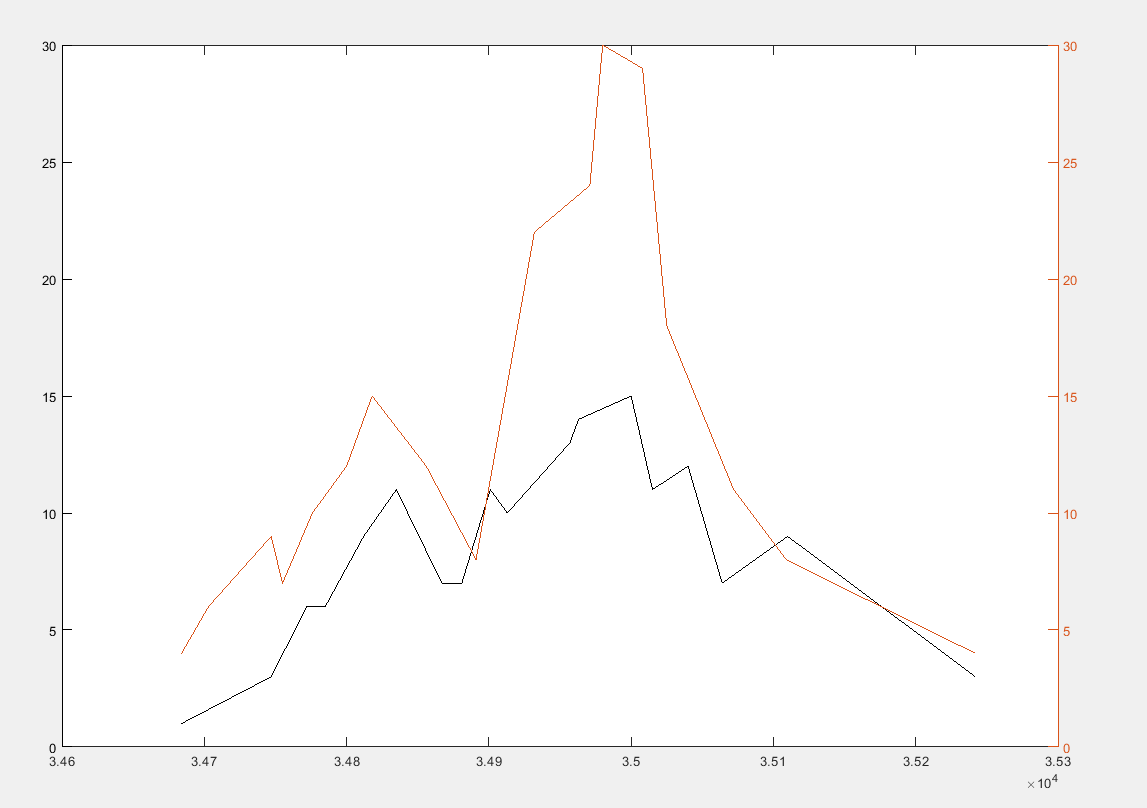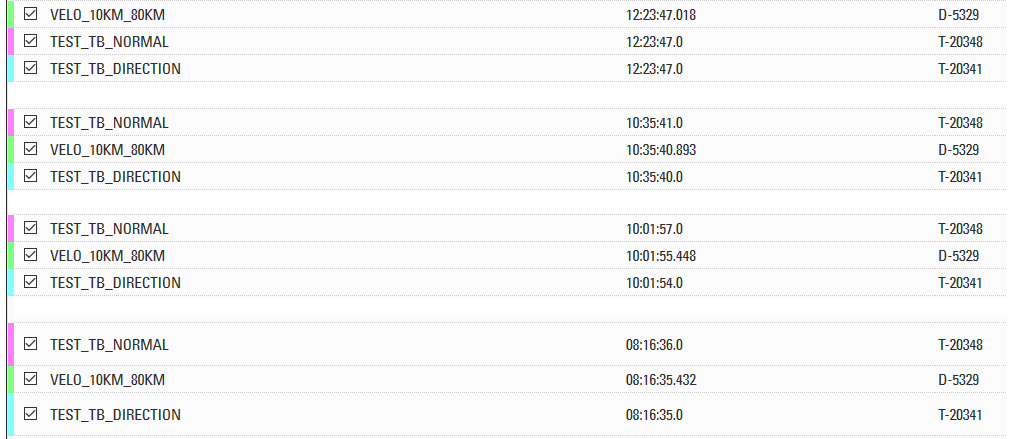Active Track Boxes are delivered with the same standard antenna as other active system devices. With the standard antenna, in a typical use case you should detect trackpings from all transponders within a 50 m radius, and may probably detect trackpings at a much wider range.
If using the Track Box Passive to receive Active Trackpings then the range will be reduced as the 2.4GHz antenna is only internal.
If you need to receive trackpings from a longer distance, you may consider using the 14 dBi high-gain directional antenna available in our shop. With this antenna, you can detect trackpings up to 700 m away in the direction the antenna is facing. It is important to note that the range is only slightly reduced in all other directions when compared to the standard antenna, transponders will likely be detected at the standard radius of 50m, regardless of the antenna used.
Important: the high-gain directional antenna is only to be used with Track Boxes, to receive trackpings! Using it with other active timing devices exceeds regulatory limits on transmission power.
Here is a graphic representation of the ranges you can expect from each type of antenna:

Note that these are only estimates, you may actually detect trackpings from further away depending on the environment, for example next to a lake or a river. Note that the orientation and immediate surroundings of the transponder will have a big influence on the range you can expect. Track Pings sent while the transponder is under water will of course not be received, and while in free air, any obstacle between the transponder and the Track Box (e.g. a wetsuit, the participant's body, etc.) will reduce the detection range.
Practical Applications
Stand Up Paddle on a River
At an SUP in early December 2018, we set up split timing locations with two active Track Boxes, one using a directional antenna, the other with a standard antenna. Here is a picture of the set up at one of the splits, and a chart showing the RSSI values of the trackpings with the directional antenna (in orange) and the normal antenna (in black). The paddlers were crossing the timing point on the opposite side of the river.


As the charts show, the directional antenna records trackpings with a higher signal strength, and the peak in signal strength is more pronounced. In such a use case, the directional antenna makes it more likely to receive the trackpings, even at longer ranges, and makes it easier to identify the closest detection from several detections received because of the low speed. Here we would recommend using the direction antenna.
Bike split of a triathlon event
At a long distance triathlon event in June 2018, we tested the accuracy of two active Track Boxes (one with a directional antenna, the other with a normal antenna) against a decoder with Active Extension at a split on the bike course that was crossed 4 times.
Below is all the raw data collected from this point for the winner of the event. The data is highlighted in green (decoder), pink (Track Box with standard antenna) and blue (Track Box with directionnal antenna)

As you can see, for each crossing, the Track Boxes consistently collected only one trackping, and recorded a time that is normally within 1 second of the decoder detection, regardless of the type of antenna used.
In this case, at close range and high speed, the directionnal antenna does not provide any advantage compared to the standard antenna.